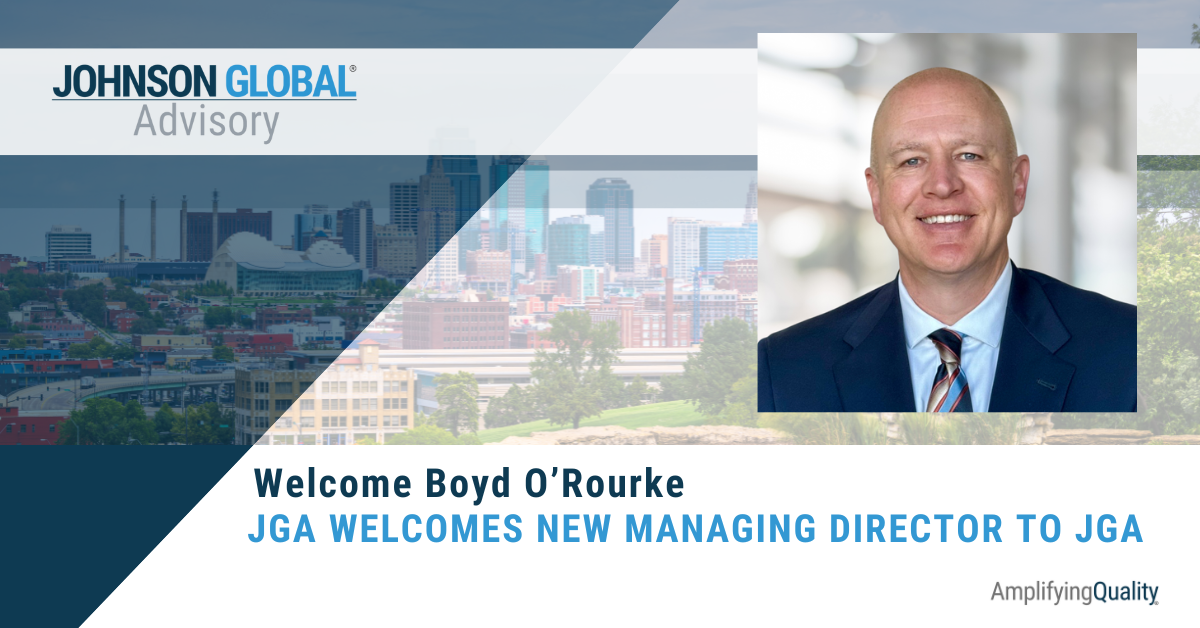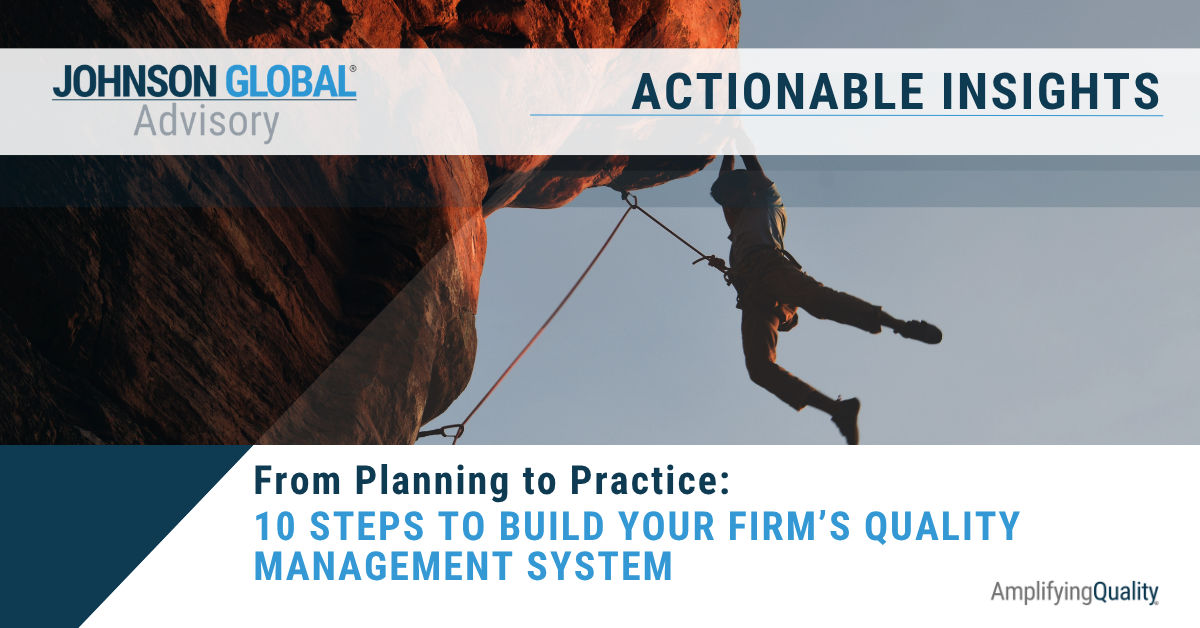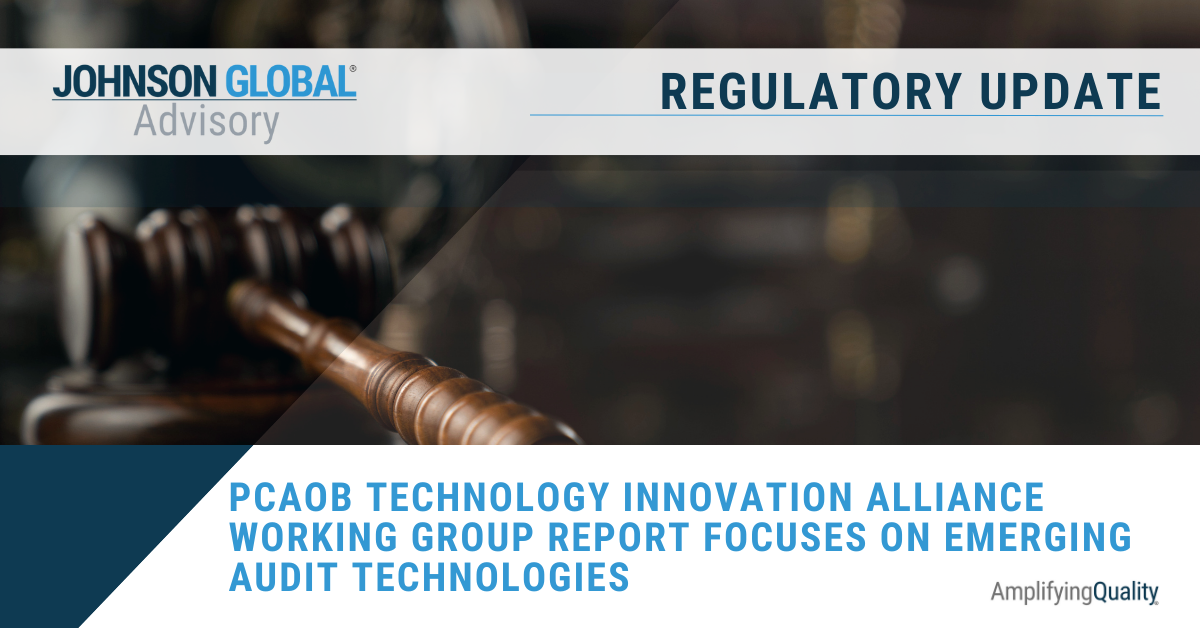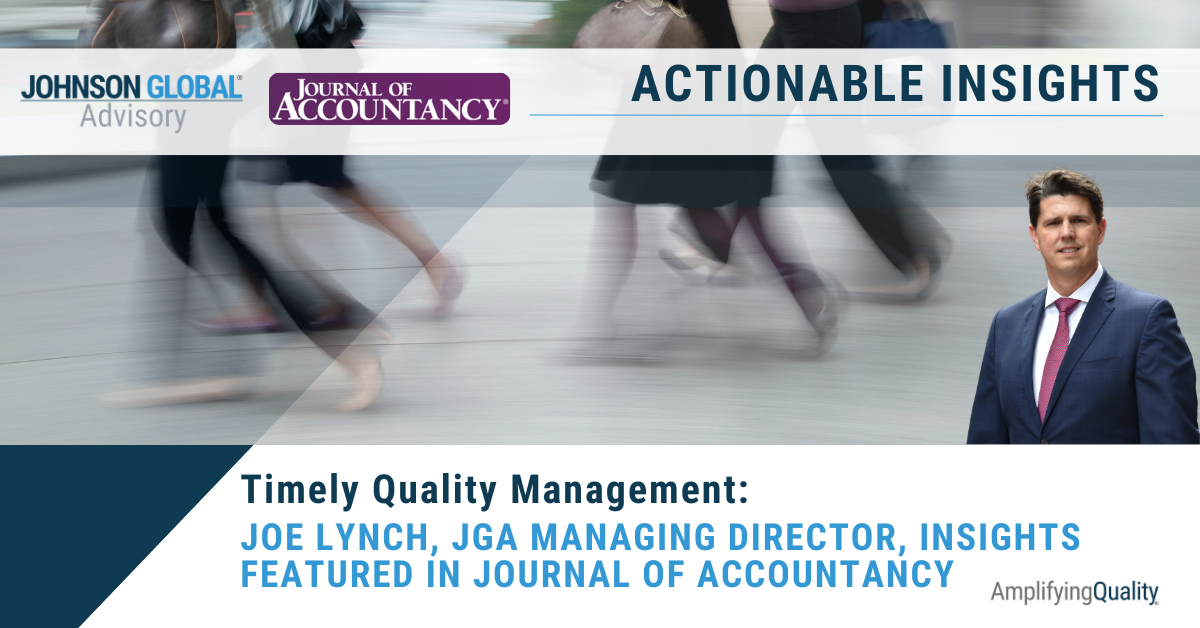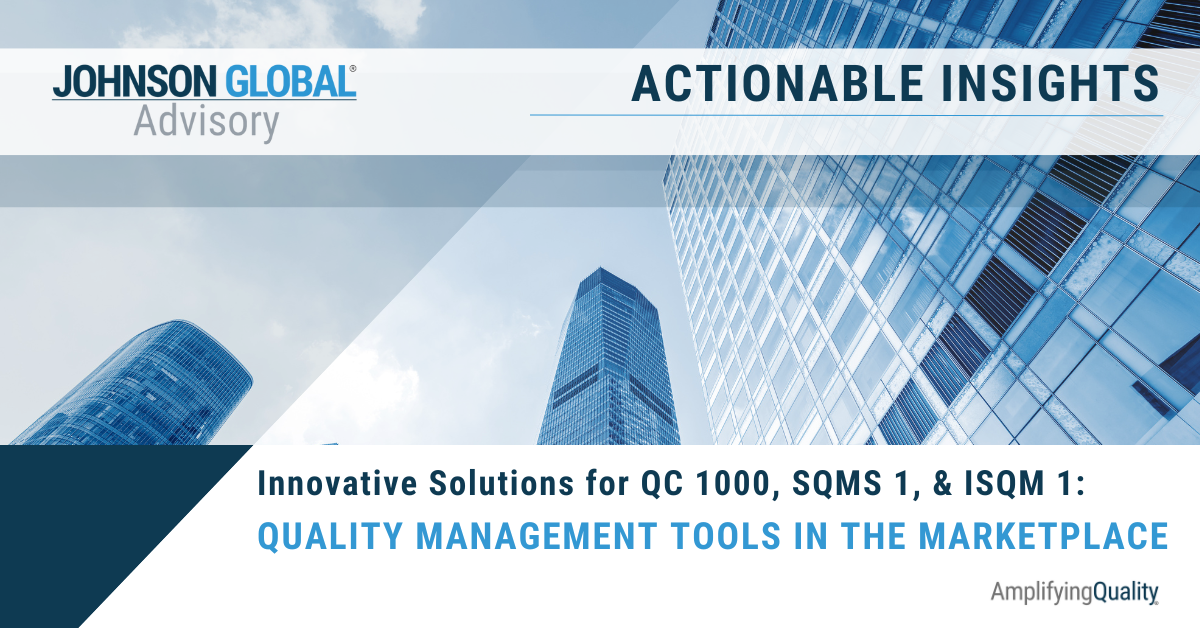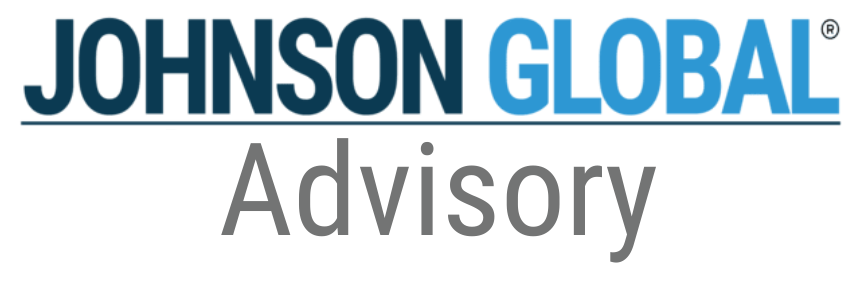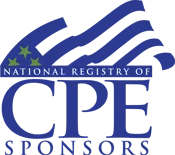By Jackson Johnson
•
July 15, 2025
Introduction As explored in previous JGA Advisor articles, the implementation of quality management standards such as ISQM 1, SQMS 1, and QC 1000 has reshaped how audit firms approach compliance, risk, and continuous improvement. These standards demand a proactive, risk-based, and firm-wide system of quality management (SoQM) that is both scalable and adaptable to local jurisdictions. We have seen through our work with firms that a tech solution is just part of the equation. Of course, having the right human capital with the capacity, drive, skills, and leadership to influence implementation across so many functions of the firm is critical. Also, understanding a baseline of risks and controls – beyond the minimum explained in the standards – will go a long way for smoother implementation. We recommend taking a look at the AICPA Practice Aid and many other AICPA resources for firms embarking on their implementation journey. While the standards themselves are rigorous, the complexity of implementation—especially across multiple jurisdictions—has led many firms to look to ways to document their system with reliable workflows in a database or other system. What we have seen is that – at a minimum – an excel solution, especially coupled with other tools like smart sheets, is the easiest entry point for a tech solution for implementation. Other more advanced tools not only streamline compliance but also enhance documentation, accountability, and real-time monitoring. In this article, we explore how three platforms—Inflo, Caseware, and QMCore—are helping firms meet these challenges and elevate their quality management systems. Why Software Matters for Quality Management Successfully implementing a SoQM under ISQM 1, SQMS 1, QC 1000, or other jurisdictional standards requires more than policies and procedures—it requires leadership, training, communication, and a culture of quality. But most importantly, it requires technology. Software platforms like QMCore, Inflo, and Caseware offer firms the ability to: Assign and track ownership of quality tasks across the firm, ensuring accountability, and transparency. Streamline risk assessment, monitoring, and remediation, which are core to all modern quality management standards. Provide real-time reporting and dashboards that allow leadership to monitor compliance and identify deficiencies early. Adapt to evolving regulatory requirements across jurisdictions, including CSQM 1 (Canada), SSQM 1 (Singapore), ASQM 1 (Australia), and PES 3 (South Africa). Educate and enable staff through embedded guidance, links to standards, and intuitive workflows. For firms evaluating whether to adopt software, the key considerations should include: scalability, jurisdictional adaptability, ease of implementation, audit trail integrity, and the ability to evolve with regulatory changes. We strongly suggest taking a look at our previous guidance on adoption of software audit tools as well. There are other applications being developed for the market as well. Inflo: A Centralized Platform for Quality Management Oversight Inflo’s Quality Management solution is designed to help firms implement and maintain a System of Quality Management (SoQM) that aligns with ISQM 1 and other global standards. Unlike traditional tools that focus solely on audit execution, Inflo’s platform provides a centralized environment for managing the entire quality lifecycle—from risk assessment to monitoring and remediation. Key Features of Inflo’s Quality Management Platform: Centralized Oversight: Inflo consolidates all quality management activities into a single platform, giving firm leadership real-time visibility into the status of quality objectives, risks, and responses. Customizable Risk Assessment: Firms can tailor their risk identification and assessment processes to reflect their unique service lines, geographies, and regulatory environments. Automated Monitoring & Remediation: Inflo streamlines the tracking of deficiencies and corrective actions, ensuring that issues are addressed promptly and transparently. Evidence of Compliance: The platform maintains a complete audit trail of all quality management activities, supporting both internal reviews and external inspections. Scalable Across Jurisdictions: Inflo’s solution is adaptable to various regulatory frameworks, making it suitable for firms operating in multiple countries or under different standard-setting bodies. By integrating quality management into a digital workflow, Inflo helps firms move beyond static documentation and toward a dynamic, data-driven approach to compliance and continuous improvement. Caseware: Integrated Methodology and Real-Time Collaboration Caseware’s cloud-based platform, particularly through its Dynamic Audit Solution (DAS), offers a comprehensive approach to quality management. Built in collaboration with CPA.com and the AICPA, Caseware provides: End-to-End Audit Workflow: Integrating methodology, workpapers, and execution tools in a single environment. Real-Time Collaboration: Enabling teams to work simultaneously on engagements, improving efficiency and reducing version control issues. Data-Driven Risk Assessment: Supporting a risk-focused audit approach aligned with ISQM 1 and SQMS 1. Caseware is especially effective for firms embedding quality management into daily audit operations while maintaining compliance with evolving standards. QMCore (FinReg): Purpose-Built for Global Quality Management Standards QMCore, developed by FinReg, is a purpose-built platform designed to help firms implement and maintain a System of Quality Management (SoQM) in compliance with ISQM 1, SQMS 1, QC 1000, and their global counterparts. It is powered by the FinReg GRC platform and has received technology accreditation from the ICAEW. Key Benefits of QMCore: Comprehensive Coverage: Seamlessly integrates all eight components of ISQM 1 and SQMS 1, including governance, risk assessment, monitoring, and remediation Task Ownership and Accountability: Allows firms to assign responsibilities clearly and track progress with ease Monitoring & Remediation: Embedded tools provide high visibility into deficiencies and corrective actions, with real-time dashboards and drill-down analytics Jurisdictional Flexibility: Adaptable to regional standards such as CSQM 1, SSQM 1, ASQM 1, and PES 3 Audit Trail Integrity: Tracks all inputs and changes, ensuring transparency and defensibility; and User Enablement: Educates staff on the standards, enables them to act, and evidences compliance through structured workflows and embedded guidance. QMCore is securely hosted on AWS and accessed via the internet, making it easy to implement and scale across firms of varying sizes and geographies. Conclusion The shift to modern quality management standards is not just a compliance exercise—it’s an opportunity to enhance audit quality, improve operational efficiency, and build a culture of continuous improvement. Software platforms like Inflo, Caseware, and QMCore are proving essential in helping firms navigate this transformation. Other players may be entering the market, and we encourage a discussion to understand the latest and compare benefits and what’s best for your firm. At Johnson Global Advisory, we support firms in selecting, implementing, and optimizing these tools to meet their unique needs. For more insights, visit our blog or contact us to learn how we can help your firm AmplifyQuality®. For more information, please contact your JGA audit quality expert .

